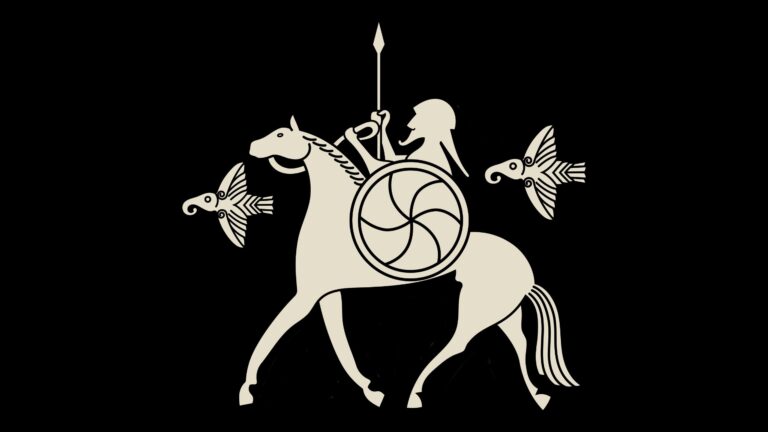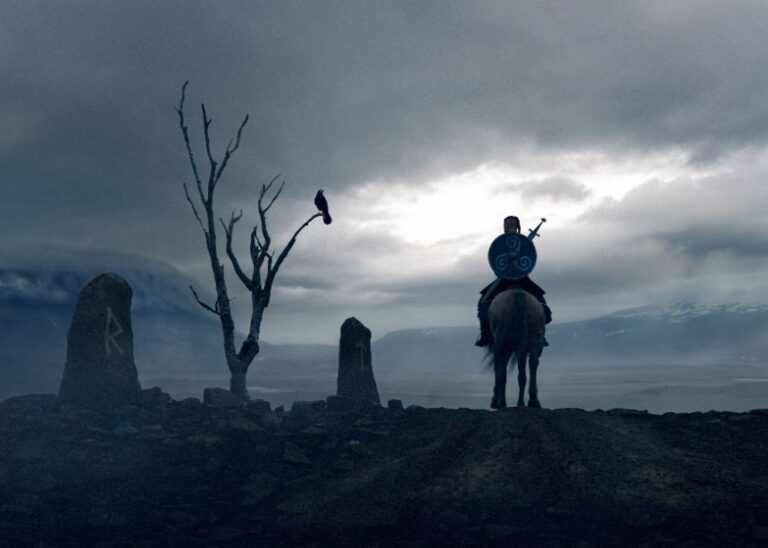From methods to pronounce his title, to the complicated fact about his relationship with Odin, listed below are some enjoyable details about Hermod, a curious character in Norse mythology.
Hermod, a determine shrouded within the mists of Norse mythology, serves as a captivating topic for anybody intrigued by the traditional tales of the Norse gods.

Although not as well-known as Odin or Thor, Hermod’s position is essential in Norse mythology, particularly within the occasions following the tragic loss of life of Baldr. Listed below are 5 enjoyable details about this enigmatic character:
1. The Appropriate Pronunciation of Hermod
Hermod’s title would possibly look easy, however it carries the nuanced tones of Outdated Norse, a North Germanic language spoken by inhabitants of Scandinavia and their abroad settlements through the Viking Age.
It is pronounced extra like “HAIR-mode” (with the emphasis on the primary syllable). Understanding the proper pronunciation of his title brings us a step nearer to the wealthy linguistic heritage of the Norse individuals.
2. Hermod The Swift Messenger
Often known as the messenger of the Norse Gods, Hermod’s swiftness was unmatched within the celestial realms of Asgard. It was a trait that proved essential in some of the poignant moments of Norse fable—the aftermath of Baldr’s tragic demise.
Baldr, the beloved of all in Asgard, met an premature loss of life, plunging the gods into despair. Of their hour of want, it was Hermod, together with his unmatched velocity and steadfast coronary heart, who stepped ahead to undertake a mission fraught with peril.
His process was to journey to Niflheim, the gloomy and forlorn realm of the useless, to entreat Hel, the ruler of this shadowy area, for Baldr’s return to the dwelling.
The journey was not one to be taken calmly. Mounted on Sleipnir, Odin’s magnificent eight-legged steed, a creature whose velocity defied the winds themselves, Hermod set out.
Really helpful Reads: Study extra about Norse Mythology with these advisable Viking Age books
Sleipnir, a marvel of the equine type, was greater than a mere mount; it was an emblem of the gods’ resolve, able to traversing distances and obstacles no extraordinary beast may hope to beat.
Their path lay via darkish and forbidding valleys, a panorama untouched by the solar’s heat, the place shadows lingered and the air held the chilliness of unstated fears.
This was a realm the place few of the dwelling dared tread, a spot that existed on the very fringes of the world, bridged by the glistening arc of Bifröst and but worlds aside from the colourful halls of Asgard.
But, Hermod’s resolve didn’t waver. Via these gloomy vales he rode, a solitary determine in opposition to the huge, uncaring expanse of Niflheimr.

His journey reveals the lengths to which the gods would go for one among their very own, demonstrating the bonds that held the inhabitants of Asgard collectively.
The truth that Hermod rides Sleipnir, Odin’s outstanding eight-legged horse, on his quest to Hel, highlights the deep connections between Odin’s household and their roles within the myths.
Sleipnir, being a creature able to transferring between the worlds, emphasises the importance of Hermod’s mission and the divine assist behind it.
3. An Echo of Greek and Roman Gods
Within the pantheon of Norse mythology, Hermod occupies a singular place that resonates with the figures of different historical traditions.
He could be likened to the Greek god Hermes and his Roman counterpart, Mercury. All three deities share outstanding attributes of velocity and agility, serving as messengers for the gods.
Their roles as divine heralds enable them to traverse between worlds, delivering messages and executing the need of the gods throughout the huge expanses of their respective realms.
This parallel attracts a captivating line via the material of mythology, highlighting the cross-cultural themes of swiftness and communication.
Hermod, Hermes, and Mercury embody the important hyperlink between the divine and the mortal, facilitating the move of data and the execution of divine decrees.
This position is essential, because it ensures the upkeep of order and the dissemination of important data amongst gods and mortals alike.
Furthermore, the comparability underscores Hermod’s significance in Norse tales, elevating him from a determine who would possibly in any other case be overshadowed by extra outstanding gods like Odin or Thor.
4. Hermod’s Questionable Heritage
Generally celebrated as a son of Odin and Frigg, the All-Father and his queen, Hermod’s connection to those pivotal figures would ostensibly place him among the many ranks of divine royalty in Asgard.
Nonetheless, the character of his lineage just isn’t as easy because it seems. A number of historical texts and poems present differing accounts of Hermod’s standing, with some referring to him indirectly as Odin’s son however quite as Odin’s “boy” or “servant.”

This distinction is greater than mere semantics; it suggests a multifaceted relationship that transcends the standard father-son dynamic prevalent in mythological narratives.
As a substitute of merely inheriting his place among the many gods via birthright, Hermod’s designation as a “servant” would possibly point out a task that was earned or bestowed upon him, presumably as a mark of his loyalty or his explicit abilities as a messenger and middleman.
This nuanced portrayal provides appreciable depth to Hermod’s character, portray him as a determine whose significance throughout the pantheon is outlined by greater than his lineage.
It implies a level of devotion and repair to the gods that’s profound and private. Whether or not his closeness to Odin and Frigg stems from familial bonds or from a place of servitude, it’s clear that Hermod’s position is significant, marked by belief and duty.
The anomaly surrounding Hermod’s heritage additionally displays the fluid nature of identification and standing inside Norse mythology, the place gods and heroes typically occupy roles that blur the traces between divinity and servitude, energy and obligation.
It speaks to the complexity of the relationships among the many Norse gods, the place titles and roles are interconnected with the intricate narratives of responsibility, honour, and loyalty.
This unsure lineage additionally invitations contemplation on the themes of belonging and identification within the historical myths.
5. Hermod’s Assorted Depictions Throughout Sources
Hermod’s portrayal throughout the huge expanse of Norse mythology is as multifaceted because the realms he traverses on his legendary quests.
Whereas the Prose Edda, penned by the medieval Icelander Snorri Sturluson, affords probably the most complete account of Hermod’s daring journey to Hel to plead for Baldr’s return, this narrative is however one thread.
Throughout completely different sources, Hermod emerges not simply as a messenger however as a determine embodying a mess of roles that stretch his affect and significance throughout the Norse pantheon.
Warrior Facet: In sure texts, Hermod is proven as a warrior, highlighting his prowess in battle alongside his position as a divine messenger. This aligns with the Norse valorization of heroism, suggesting that Hermod embodies each swiftness and power.
Shamanistic Journeys: His journey to Helheim has parallels with shamanic practices, emphasizing his capability to navigate between completely different realms. This facet positions Hermod as a mediator between the divine and the mortal, underscoring the religious significance of his quests.
Literary Presence: Past the Prose Edda, references within the Poetic Edda and different sagas enrich Hermod’s character, every including layers to his mythological presence and cultural significance.
Really helpful Reads: Study extra about Norse Mythology with these advisable Viking Age books
Hermod’s different portrayals replicate the dynamic nature of Norse mythology, the place gods are complicated and multidimensional. His character encapsulates themes of braveness, mediation, and the interaction between the bodily and religious realms.
